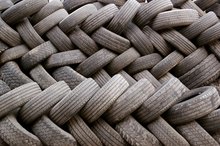What does fact checked mean?
At Healthfully, we strive to deliver objective content that is accurate and up-to-date. Our team periodically reviews articles in order to ensure content quality. The sources cited below consist of evidence from peer-reviewed journals, prominent medical organizations, academic associations, and government data.
- MayoClinic.com: Nickel Allergy; October 2010
- National Institutes of Health: Contact Dermatitis; Linda Vorvick; November 2009
The information contained on this site is for informational purposes only, and should not be used as a substitute for the advice of a professional health care provider. Please check with the appropriate physician regarding health questions and concerns. Although we strive to deliver accurate and up-to-date information, no guarantee to that effect is made.
Allergies to Brass
An allergic skin reaction, or contact dermatitis, is possible from contact with brass. Brass is an alloy of copper and zinc, but brass may also contain other metals. According to MayoClinic.com, nickel is the most common metal that causes allergic reactions. A specialized brass called "nickel silver brass" contains 10 to 20 percent nickel, according to the Copper Development Association. Nickel silver brass is used for jewelry, musical instruments and a number of different decorative items.
Cause
According to MayoClinic.com, metal allergies are a case of mistaken identity. Your body's immune system mistakenly believes that a metal like nickel or brass is something that could harm you. An allergic reaction to nickel, or metals containing nickel, like brass, may increase after repeated or prolonged exposure. The American Academy of Dermatology identified more than 3,000 potential causes for allergic skin reactions, including metals like nickel and zinc, which are both found in brass 3.
- According to MayoClinic.com, metal allergies are a case of mistaken identity.
- The American Academy of Dermatology identified more than 3,000 potential causes for allergic skin reactions, including metals like nickel and zinc, which are both found in brass 3.
Symptoms
Allergic Reaction to Tungsten
Learn More
The National Institutes of Health says that allergic symptoms resulting from exposure to metals like brass are usually delayed for 24 to 48 hours after exposure. MayoClinic.com reports that symptoms may occur within 12 hours. Symptoms include itching, redness, tenderness, swelling and warmth of the exposed area. Blisters and dry patches of skin resembling a burn may also appear, and symptoms can last from two to four weeks.
- The National Institutes of Health says that allergic symptoms resulting from exposure to metals like brass are usually delayed for 24 to 48 hours after exposure.
- Blisters and dry patches of skin resembling a burn may also appear, and symptoms can last from two to four weeks.
Treatment
Your doctor may prescribe a corticosteroid cream to reduce itching and swelling, including clobetasol and betamethasone dipropionate. The doctor may prescribe an oral corticosteroid, such as prednisone, for a large or severe rash. The MayoClinic.com also recommends soothing lotions like calamine, over-the-counter antihistamines like Benadryl, Allegra and Zyrtec, and over-the-counter corticosteroid lotions -- after you talk to your doctor about the safe use of these products for your specific condition.
Related Allergies
Diseases Caused by Black Toxic Mold
Learn More
In 2010, Susan Donaldson James reported for ABC News Health that brass instruments could be associated with allergic lung and respiratory reactions 2. According to James, researchers in Europe and the United States had investigated cases of hypersensitivity pneumonitis, an allergic condition that resulted from musicians breathing mold and bacteria growing in their brass instruments. Dr. Myron Cohen, director of the University of North Carolina Center for Infectious Diseases, told ABC News that it was a rare problem, advising musicians to "just clean the instruments."
Related Articles
References
Writer Bio
Amy Sterling Casil is an award-winning writer with a Master of Fine Arts in creative writing from Chapman University in Orange, Calif. She is a professional author and college writing teacher, and has published 20 nonfiction books for schools and libraries.









